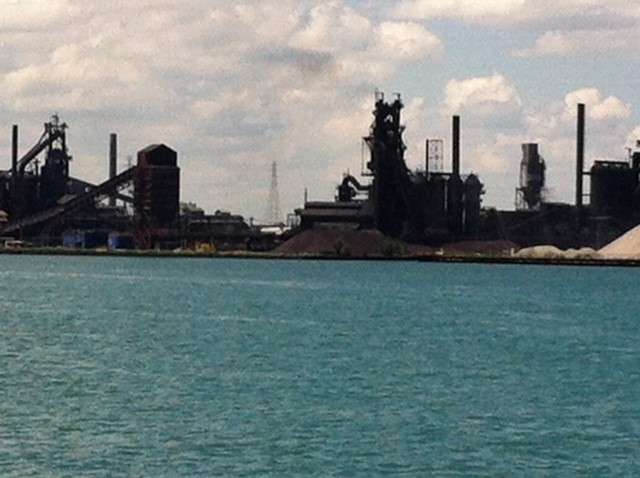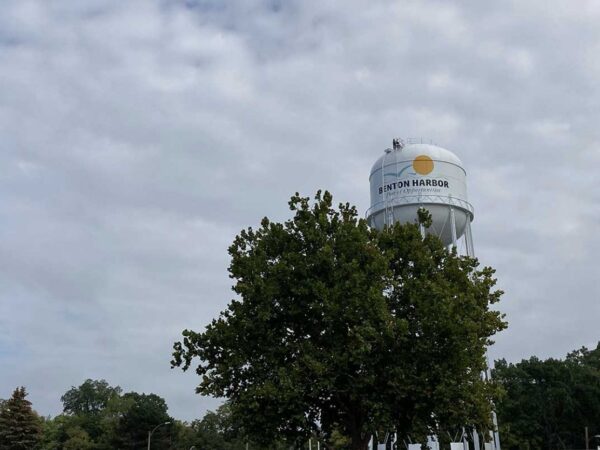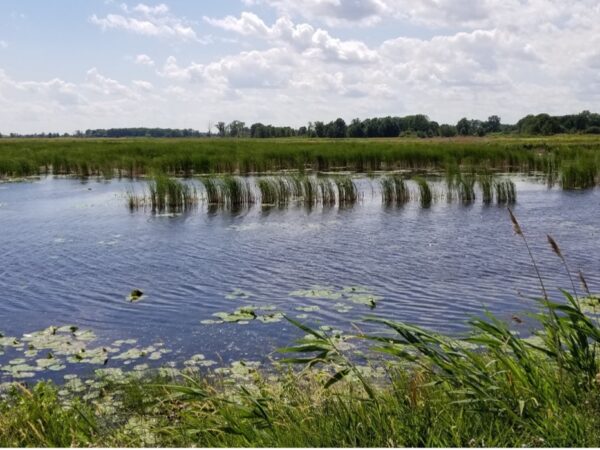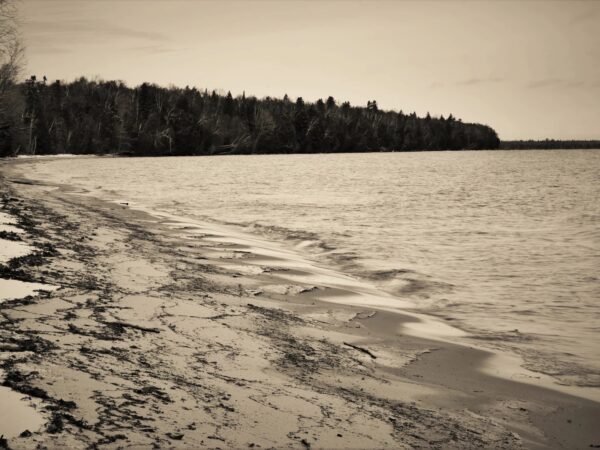
The EPA’s Chris Korleski gets excited when speaking about cleaning up the Great Lakes region’s decades-old, contaminated sediment sites like the Detroit River.
He talks about the “tremendous effort” that’s been rekindled in the past two years under the Biden administration. And how “motivated” the people who work to advance the cleanup are and the value of the partnerships that facilitate restoration.
Since 2012, Korleski has directed the U.S. EPA’s Great Lakes office in Chicago responsible for the sites, known as Areas of Concern. That’s the bulk of the time since 2010 when federal funds started flowing to remediate sites formally declared AOCs in 1987. Prior to 2010, remediation was spotty and relatively small-scale.
Great Lakes Now recently talked with Korleski who was in Green Bay, Wis. overseeing the annual conference that puts a spotlight on the AOCs.
The conference theme this year was “accelerate,” referring to President Biden’s February 2022 initiative to quicken the pace of AOC remediation by infusing an additional $1 billion over five years. A goal was established by Biden to have a vast majority of the cleanup completed by 2030.
Great Lakes Now asked Korleski about his message to the 300 attendees from across the region.
He said that conference attendance exceeded expectations and he took that as an indicator of the enthusiasm that still exists to accelerate the work – work that can be tedious and is vulnerable to setbacks based on lack of funding and discovery of previously unknown problems.
“The work is not easy and it takes time,” Korleski acknowledged, then he reassured that his office is “doing everything to continue the acceleration of Area of Concern remediation across the Great Lakes basin.”
Historically, Korleski has emphasized the importance of partnerships in AOC remediation and he used the conference as an opportunity to reinforce that message.
Detroit River funding conundrum
The Detroit River and its accompanying tributary the Rouge River are among the most degraded sites in the region and the most complex to remediate. While there has been success in restoring some habitat, the Detroit River still contains approximately 3.5 million cubic yards of contaminated sediment, according to previous EPA estimates.
Korleski acknowledged the complexity and challenges that come with remediation, but said EPA is spending $1 million for additional sediment sampling in an area known as the Upper Trenton Channel down river from Detroit. He said work on the sediment will scale up substantially in the next two years and Biden’s 2030 goal is still the target.
One of the bureaucratic complexities is the federal requirement that each project have a non-federal sponsor for 35% of the cost. Ideally, that cost would be borne by the entity responsible for the pollution, but they may no longer exist. In any case, proving responsibility can be time-consuming and result in protracted legal entanglements that delay cleanup.
And skeptical activists and others are concerned that the inability to attract a non-federal sponsor could jeopardize access to federal funding within five years.
In June, a group of 64 entities composed of non-profit advocates, the city of Detroit and other cities that border the river, educators, and the Great Lakes Water Authority wrote to Michigan Gov. Gretchen Whitmer and key legislative leaders asking the state to engage in remediating the Detroit and Rouge rivers.
The state has been involved via its Department of Environment, Great Lakes and Energy, but has not prioritized funding that could speed up the process.
The groups asked that $100 million be budgeted to cover the required cost of the non-federal share.
But they have not received a response to their inquiry, one of the signatories said, speaking on the condition of anonymity.
Great Lakes Now contacted Gov. Whitmer’s office and that of state Sen. Sarah Anthony and state Rep. Angela Witwer for comment. Both legislators chair the appropriations committee of their respective chambers and were addressed on the advocate letter. Whitmer, Anthony and Witwer are Democrats.
Gov. Whitmer’s office did not respond to requests for comment. Neither did the offices of Sen. Anthony and Rep. Witwer.
Asked for his take on the advocate letter to Michigan elected officials, EPA’s Korleski demurred. “That is clearly a Michigan political issue and the last place that I want to insert myself is in Michigan politics,” he said.
Ongoing pollution threatens progress
As a guiding principle, the EPA will normally delay remediation work if a waterway is still being polluted.
“We don’t want to spend taxpayer money only to have to redo work in the same area. That’s something we really want to avoid,” said Korleski.
But the issue is in the spotlight in the Detroit River. Recent Planet Detroit reporting chronicles the serious nature of a local chemical plant’s ongoing pollution of the river. Asked if the continued pollution could impede sediment remediation Korleski said, “the short answer is yes.”
He said his office has been coordinating with staff working on the chemical plant issue and that the problems are technically complex involving hydrology and engineering. Korleski emphasized that there are a lot of issues in play in the area.
Of the original 26 Areas of Concern on the 1987 list, six have been delisted, meaning impairments have been addressed and a post-management action monitoring period has been completed. Management action has been completed at 10 sites and they are now in the monitoring period.
Of the 14 AOCs in Michigan, three have been delisted: White Lake, Menominee River and Deer Lake.
Korleski told Great Lakes Now he remains “bullish” on cleanup of the sites by the 2030 deadline.
Catch more news at Great Lakes Now:
Researchers: Current Great Lakes stewardship is “ill-equipped” to handle future challenges
Filmmaker looks at Detroit through the lens of water, life events and justice
Featured image: Industrial site as seen from the Detroit River. (Photo credit: Gary Wilson)




